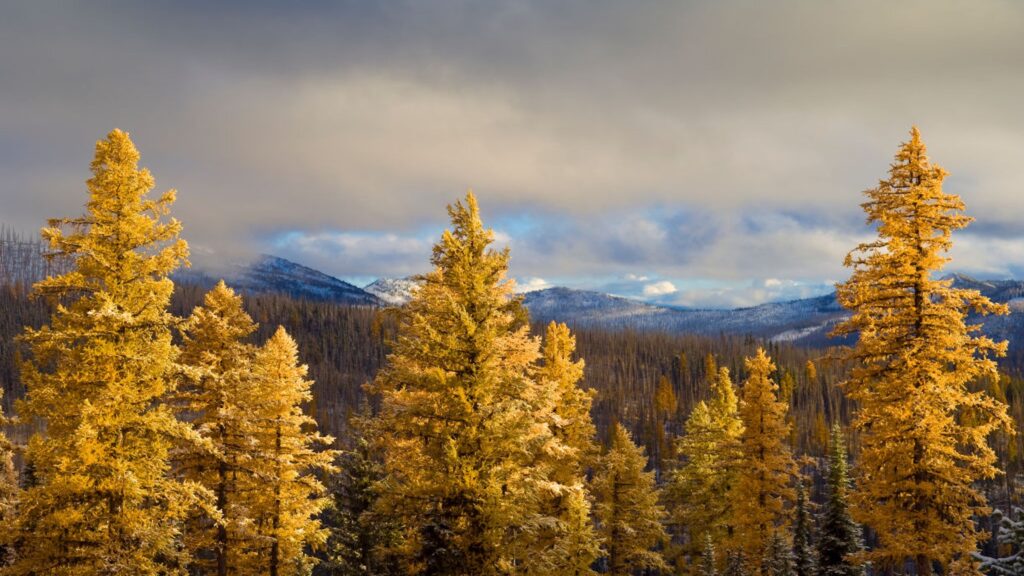The largest Western Larch in the U.S has survived the plague, and the Industrial Revolution. It’s also a stones-throw from a major highway.
Western larches are one of the tallest and long-lived tree species in the U.S. (Photo: Universal Images Group/Getty Images)
Published September 21, 2025 03:33AM
Towering over a centuries-old treestand in western Montana is an ancient Western Larch that goes by the name Gus. At more than 150 feet tall, Gus has survived the Christian Crusades, seen the fall of the Mongolian Empire, breezed through the pines during the European Renaissance, and withstood changes seen during the Industrial Revolution.
Measuring more than 150 feet tall—taller than the Statue of Liberty—Gus was awarded the title of “Largest Larix occidentalis (Western Larch) Tree in the United States” by the National Register of Champion Trees in 2020, and is among the largest western larches in the world. The record states Gus is 154 feet tall, though some sources indicate the larch measures 153 feet.
Despite its enormous size, the tree is located a short detour from western Montana’s Highway 200, about an hour north of Missoula, just outside of the lakeside town of Seeley Lake. Google Maps refers to the site as “Gus, the huge larch tree,” but the massive tree is actually located in Jim Girard Memorial Tamaracks Grove, a 60-acre old-growth grove of Western Larch. It’s just a 0.1-mile walk to see Gus, but visitors can continue on the 1-mile looped nature trail, making the stop accessible for hikers of all abilities.

When the tree was just a sapling, there were an estimated 250 million people on Earth, far fewer than today’s 6.8 billion. A close look at Gus shows the tree has seen a millennia-worth of trials and tribulations.
“At the base of the tree are telltale signs of fire. This giant survived at least 40 fires that burned through Girard Cove about every 24 years. That takes some serious fireproofing,” according to a U.S. Forest Service (USFS) sign posted in the tree stand. “Thick bark forms an insulated shield from scorching heat. The tree’s living limbs are high above the reach of flames. The open crown structure allows the heat of the fire to pass through, rather than igniting the deciduous needles.”
Gus is as impressively round as he is tall. The tree’s crown measures 34 feet across—longer than a London bus. Gus’ trunk also measures roughly 22 feet, 9 inches around, or the equivalent of 15 children holding hands in a circle, according to the USFS.
In addition to being a family-friendly pitstop during a Montana road trip, Gus is also a crucial part of its ecosystem.
“This tree has served as home to countless birds, insects, and other wildlife. An old larch makes a great choice for cavity nesters like woodpeckers. The heartwood in the tree’s center decays first and makes for easy excavating. The harder sapwood layer around it serves as a protective shell for the nest and support for the tree,” reads a USFS sign at the tree grove.
Also known as a tamarack, western larches are found throughout the Rocky Mountain segments of Montana, Idaho, Oregon, Washington, and British Columbia. It’s not uncommon for this long-lived species to grow to heights of over 100 feet, providing crucial forest cover for both plants and animals alike.
Can’t get enough Montana? Check out the Outside adventure guide for six epic road trips through Big Sky Country.


